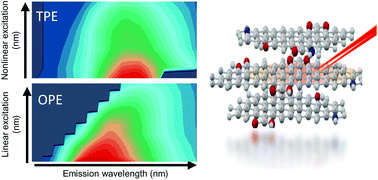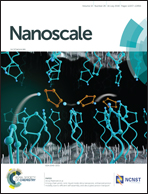Selective two-photon absorption in carbon dots: a piece of the photoluminescence emission puzzle†
Abstract
Carbon nanodots (Cdots) are now emerging as promising nonlinear fluorophores for applications in biological environments. A thorough and systematic approach to the two-photon induced emission of Cdots that could provide design guidelines to control their nonlinear emission properties is still missing. In this work, we address the nonlinear optical spectroscopy of Cdots prepared by controlled chemical cutting of graphene oxide (GO). The two-photon absorption in the 700–1000 nm region and the corresponding emission spectrum are carefully investigated. The highest two-photon absorption cross-section estimated was 130 GM at 720 nm. This value is comparable with the one reported for graphene nanoribbons with push–pull architecture. The emission spectrum depends on the excitation mode. At the same excitation energy, nonlinear excitation results in excitation-wavelength independent emission, while upon linear excitation the emission is excitation-wavelength dependent. The biphotonic interaction seems to be selective towards sp2 clusters bearing electron donor and acceptor groups found in push–pull architectures. Both linear and nonlinear emission can be understood based on the existence of isolated sp2 clusters involved in π–π stacking interactions with clusters in adjacent layers.



 Please wait while we load your content...
Please wait while we load your content...